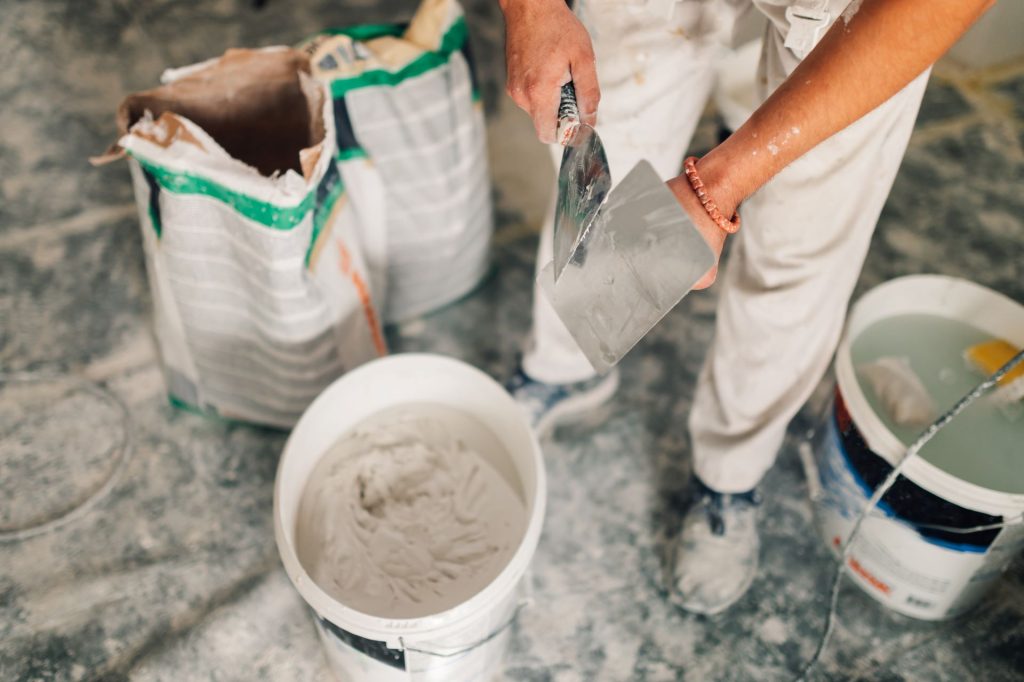What is the difference between plasterboard jointing compound and plaster? This is a good question and one we get asked a lot. But comparing these two is a little like comparing the planet Mercury with Freddie Mercury – there isn’t much in common, other than the name. However, it is easy to understand why someone would want to know about the differences between plaster and jointing compound, so we’re going to breakdown the differences and provide some background as to why this is such a confusing subject. Let’s get started.
BetaBoard – For Your Plastering Needs
BetaBoard is your first stop when you need plaster supplies for you next project. We have a large selection of construction materials available online or at one of our great stores. You can get in touch with us today through our online contact form with any questions or to organise a quote.
Plasterboard Jointing Compound
Plasterboard is also known as drywall, gypsum board, wallboard or by the brand name Sheetrock. It is made up of gypsum (used to make chalk) between two paper facers to form a sheet or board. The interior walls of most homes and office buildings are made of plasterboard fastened to the structural framing with screws or nails. The room you are in right now probably has this kind of wall construction.
When plasterboard is installed for building a wall, there will be gaps or seams where the sheets of plasterboard meet in the middle of the wall, at the corners and where the walls meet the ceiling. But you probably don’t see that on the walls of the room you are in right now. That is because of plasterboard jointing compound, correctly applied in combination with joint tape to cover the seams, and sanded to a smooth, seamless finish. This is what jointing compound is used for – covering the lines where plasterboard is joined together.
There are many kinds of jointing compound. Some are quick drying, but the more common form dries in about 24 hours, giving the workers plenty of time to apply the compound to all the walls in a room, or in multiple rooms. Jointing compound is available in ready mixed buckets or in a dry powdered form that needs to be mixed with water before use. Jointing compound is made up of gypsum, some binders that vary depending on brand, and water. When dry, it is easy to sand and can be reactivated with water, making it very easy to work with, but not waterproof, and only suitable for interior applications.
Plaster
This is made from cement, sand and water, with some additional binding ingredients sometimes thrown in depending on use and the brand of plaster. Cement, sand and water are the same three key ingredients in concrete, mortar for bricks and in plaster, and the only differences between them are the ratios of these three ingredients. Plaster is easy to work with, making it ideal for decorative applications on walls and ceilings. Plaster is also used as a protective coating for walls because when it hardens it is like a rock, making it resistant to water and fire.
Plaster is a very old building material – dating back as far as the ancient Egyptians. It has also been used in wall art for a very long time, either in stucco plasterwork or as a material for painting on. Michelangelo’s Sistine Chapel painting and other Italian fresco paintings were done on plaster. Today, it is very common to see plaster used in the construction of houses, especially for outside walls, and you can sometime find plaster used on the inside of homes where a layer is applied over plasterboard to give pleasing textural surface.
Why Are the Names So Confusing?
Nobody is quite sure why, but we think it all comes from gypsum, the primary material used to make plasterboard. Medical plaster for casts and plaster of Paris used in crafts are structurally different from construction plaster, but they use gypsum as the primary ingredient. Gypsum can also be found as an additional ingredient in many kinds of construction plaster. Because of the overlap in ingredients and some similar uses, plaster as a name can be found in many different construction products, from plasterboard jointing compound to plaster itself.
Contact Us Today to Learn More
At BetaBoard, we know all about plaster compounds, and we are ready to give you the advice you need about which is best for your next project. We hope this clears up some confusion about these two building materials – these are the kinds of question we love to answer. If you have any questions, or if you’d like to organise a quote, contact us today. You can also visit us at one of our excellent stores.














